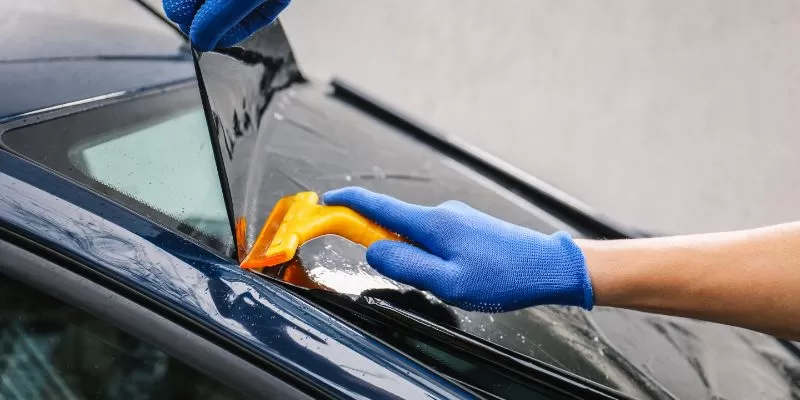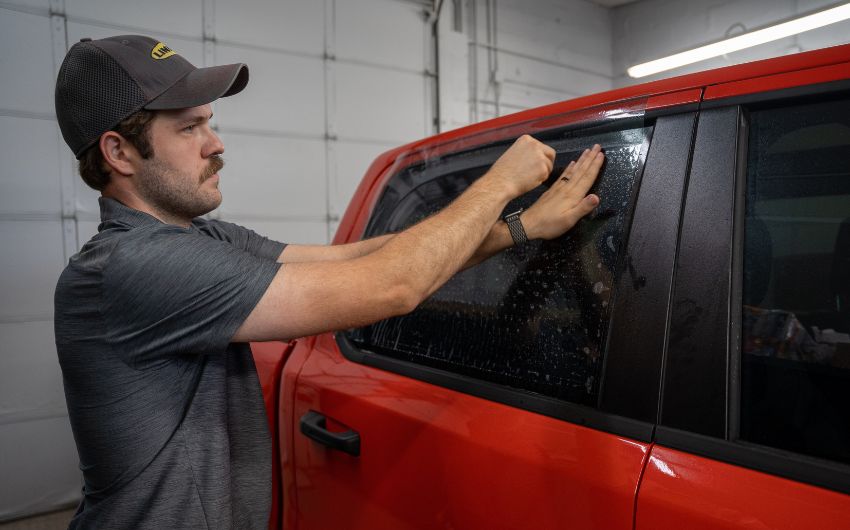Auto Window Tinting: What to Expect During the Installation Process
Auto Window Tinting: What to Expect During the Installation Process
Blog Article
Window Tinting Rules and Guidelines: What You Need to Know Prior To Tinting Your Automobile
Prior to continuing with home window tinting for your lorry, it is vital to acquaint on your own with the varied laws and standards that govern this practice across various states. These policies dictate the permitted levels of tint darkness, usually determined by visible light transmission (VLT) percents, and consist of certain specifications for front windshields aimed at making certain roadway safety and security.
Introduction of Window Tinting Regulations
Home window tinting regulations are frequently subject to variation throughout different territories, showing regional laws and safety factors to consider. These legislations determine the acceptable degrees of tint darkness and reflectiveness on automobile home windows, ensuring that motorists maintain adequate presence while likewise protecting versus hazardous UV rays and warm.
The majority of policies identify window tinting based upon the Visible Light Transmission (VLT) percentage, which shows the quantity of light that can go through the window. Normally, reduced VLT portions indicate darker colors. Legislations often set apart in between the front, side, and back windows, with stricter restrictions put on the front windshield to improve safety and security for both the vehicle driver and various other road customers.
Compliance with home window tinting policies is crucial, as violations can result in fines, mandatory elimination of the tint, and possible rises in insurance policy premiums. It is necessary for lorry owners to familiarize themselves with regional laws prior to proceeding with window tinting installations.
State-by-State Tint Rules
Recognizing the certain window tinting policies in each state is crucial for lorry owners seeking to follow the law. Each state in the united state has actually developed its own collection of policies controling window tinting, which can differ dramatically. These guidelines frequently determine the allowed degrees of tint darkness, the sorts of windows that can be tinted, and any medical exemptions that may apply.
As an example, states like California have strict limitations on color darkness for front home windows, while others, such as New Mexico, may permit darker colors. In addition, particular states mandate details exposure percentages for different home windows, consisting of the windshield, front side home windows, and back home windows. It is essential for auto proprietors to familiarize themselves with their state's regulations to prevent possible fines or fines.
Furthermore, some states may need an accreditation sticker to be positioned on tinted home windows, suggesting compliance with state regulations. Failing to abide by these policies not only runs the risk of legal consequences yet can also affect safety and security and exposure while driving. As a result, vehicle proprietors ought to conduct extensive study or seek advice from regional authorities to ensure full understanding and compliance with state-by-state tint guidelines.
Allowed Color Levels and Types
Many automobile owners might be amazed to discover that enabled color degrees and kinds differ widely throughout various states. Each state has developed its own laws pertaining to the permitted darkness and reflectivity of window color, usually gauged by Visible Light Transmission (VLT) portions. VLT describes the quantity of light that can pass through the tinted windows; therefore, a reduced percent shows a darker color.

In addition, the sorts of color materials enabled can differ, with some states forbiding mirror-like or metallic finishes. It is vital for car proprietors to acquaint themselves with their state's certain legislations to ensure conformity. Non-compliance can lead to penalties, necessary elimination of the tint, or various other legal repercussions, making it critical to comprehend these laws prior to continuing with installment.
Medical Exceptions for Tinting
While not all states provide allowances for medical exceptions pertaining to window tinting, those that do recognize the necessity for specific people to boost presence and comfort due to clinical problems. Numerous clinical conditions, such as lupus, skin cancer cells, and specific eye problems, can make people particularly sensitive to sunshine. Subsequently, these people might need darker tints to safeguard themselves from harmful UV rays and glow.

It is very important to note that also with a medical exemption, there may still be limitations on the level of tint allowed. Conformity with state laws makes certain that people are both protected and within legal limits. Those thinking about medical exemptions must contact their neighborhood Division of Motor Vehicles or equal authority to comprehend the procedures and demands necessary to obtain an exemption properly.
Charges for Non-Compliance
Falling short to abide with home window tinting laws can bring about considerable penalties, which vary by state. Legislation enforcement companies are equipped get more to release citations for lorries that do not adhere to the defined tinting regulations. These charges usually consist of fines, which can range from small amounts to a number of hundred dollars, depending on the seriousness of the violation and the state concerned.
In some jurisdictions, duplicated offenses may result in intensifying fines or added charges, such as required court looks. Non-compliance may demand the elimination of illegal tinting, typically at the proprietor's cost. In extreme instances, habitual offenders might deal with suspension of their lorry enrollment up until compliance is attained.
Furthermore, insurance coverage effects may emerge from obtaining numerous citations for home window tint offenses. Insurance companies might view such infractions as an indication of riskier habits, potentially causing increased costs or problem in find more coverage.
To prevent these penalties, it is crucial for lorry owners to familiarize themselves with their regional window tinting regulations and guarantee that their car complies (Window Tinting). This proactive strategy not just stays clear of lawful implications but likewise advertises road safety
Final Thought

Many guidelines classify home window tinting based on the Visible Light Transmission (VLT) percent, which shows the amount of light that can pass via the home window. Conformity with home window tinting policies is critical, as infractions can result in penalties, mandatory elimination of the color, and possible rises in insurance policy costs.Comprehending the particular window tinting guidelines in each state is vital for car proprietors looking for to comply with the legislation. These regulations often determine the allowable levels of tint darkness, the types of home windows that can be tinted, and any kind of medical exceptions that might use.
For instance, states like you could try these out The golden state have stringent constraints on color darkness for front windows, while others, such as New Mexico, may enable darker tints.
Report this page